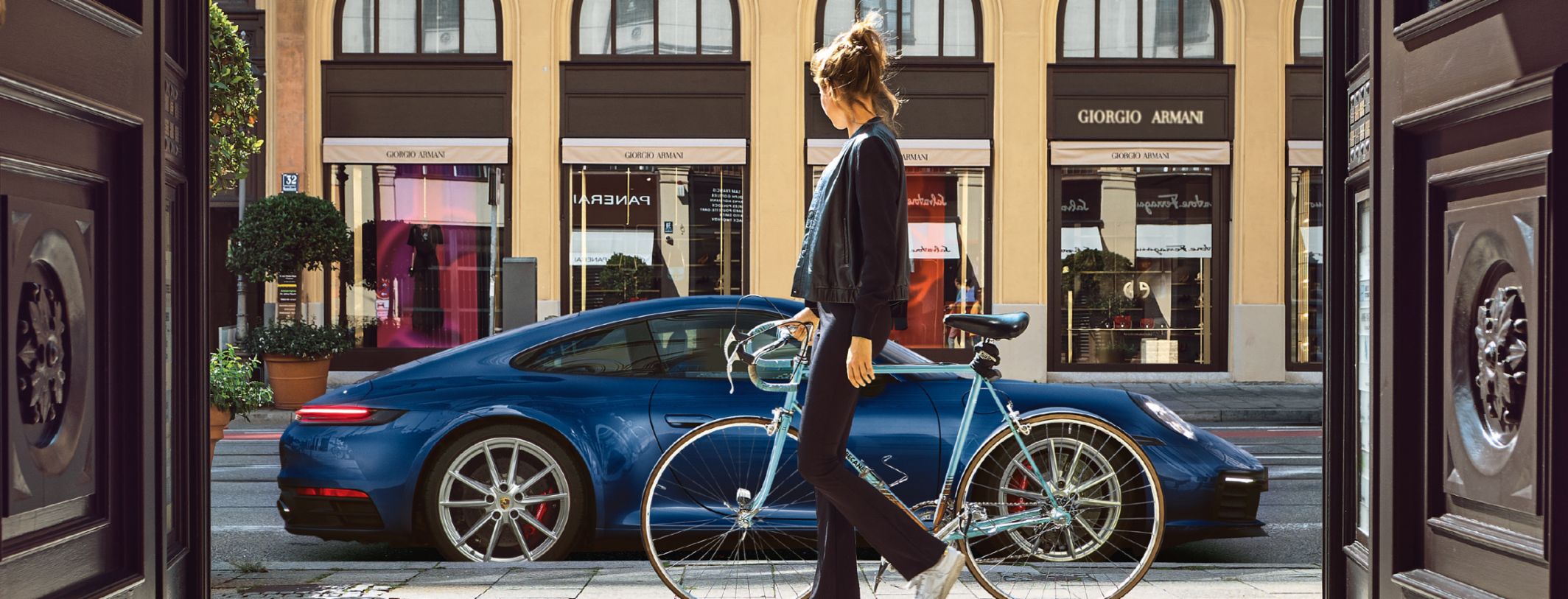Eye Contact
What goes on in the minds of passersby when they see the new Porsche 911?
We examine this question on Maximilianstraße in Munich.
km 106–387
5. Ludwigsburg
6. Munich
The object catches the eye in passing. The passerby is jarred. The normal sequence—glance, register, and proceed—hits a snag. Then the penny drops: this thing must be new!
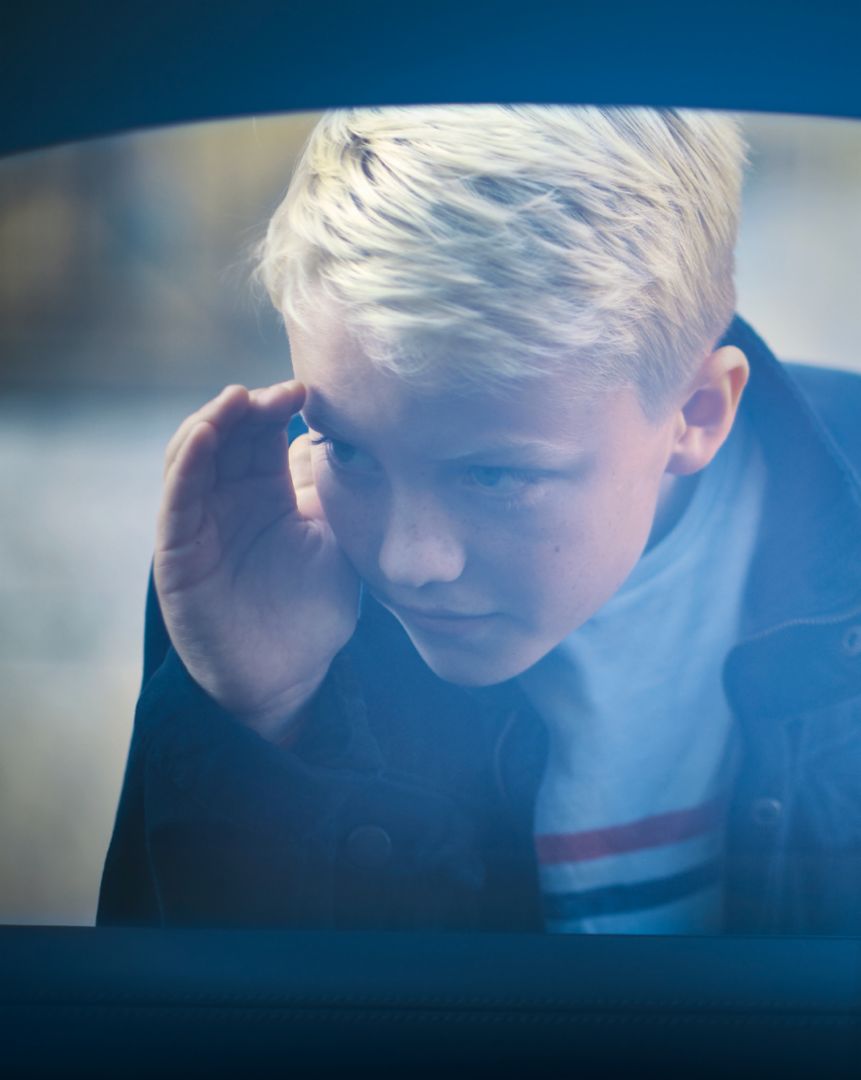
Wait a second, that’s...
...exactly, it’s new! Even in a well-heeled area like Munich’s Maximilianstraße, the new 911 catches the eye. For kids, there’s no hesitation: run, look, and delight!That’s normally all it takes. As complex as the human mind is, seducing it is a disarmingly straightforward proposition: simply show it something unknown, something new, and it immediately responds enthusiastically.
“The brain likes novelty” is a truism of cognitive science. A glimpse of something new—a car, a watch, or perhaps a cell phone—immediately triggers excitement in the brain of the beholder. Dopamine is released, and the brain’s reward center kicks into action. The likelihood of risking a second or third glance increases enormously. Everyone has experienced it. The question is: why? How does the individual benefit from this reflexive fixation on the new?
The answer, in simplified terms, is that anything new could be dangerous. As a rule, humans love the familiar. That was the case in the Stone Age and hasn’t changed in the cosmopolitan context of twenty-first-century urban life. The chief priority is making sure that everything is safe, understood, and under control.
Our brain constantly makes predictions of how our environment should look and what’s likely to happen next. And that’s immensely useful in helping us make our way through the world with the least possible effort. If we suddenly see something new or unknown, it sets off our alarm bells: a prediction error has occurred, one might say. The continuously updated forecast “All clear!” is suddenly wrong.

Just looking is a pleasure.
Scientists have discovered that just looking at a sports car causes the brain to release “happy” neurotransmitters.This kind of reaction can be triggered by a new Porsche driving by, the latest iPhone, or seeing George Clooney on the other side of the street. For our distant ancestors in the Neander Valley 130,000 to 30,000 years ago, George Clooney might have been a predator. “Danger!” All systems are immediately switched to high alert.
What used to save lives now provides a kick and a rush of joy. The new provides a shot of dopamine, a largely stimulating neurotransmitter of the central nervous system. It’s the elixir behind our most private desires: love, lust, passion. Scientists from the University of Bonn recently discovered that even photos of sports cars can activate the reward centers of the brain.
But how do we notice new things in the first place? No question: the bigger, louder, and more colorful the car is, the greater the likelihood that we’ll notice it.
If it’s roaring down the street, most passersby will turn their heads. But our attention isn’t quite as simplistic as that, because our salience detectors spring into action at the same time. These are regions of the brain that evaluate the importance of stimuli through continuous feedback loops. If the result is “relevant,” the detectors ensure that we take a closer look. Emotions play a central role in this. Experts estimate that 95 percent of all such decisions are determined by emotions. So it’s entirely possible for someone to intuitively remember that the card with a 911 on it, in a game of Top Trumps played decades ago, was sure to win a trick—a memory that informs future behavior in a matter of milliseconds, beyond any rational thought.
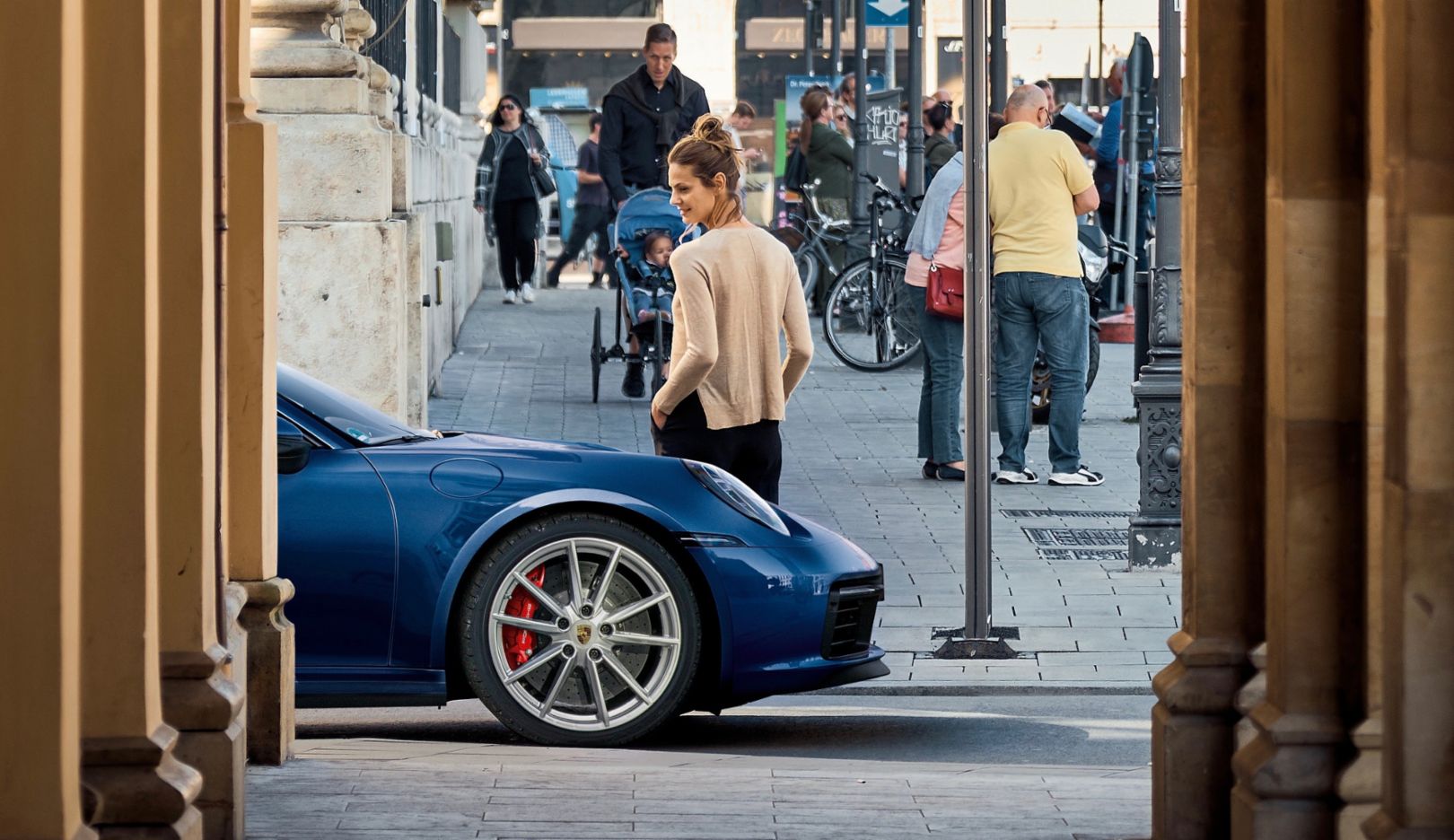
Children lack this process of weighing the consequences. They see a new car and simply make a beeline for it with a rush of curiosity and delight. The early Porsche advertisement depicting a young boy clinging to a 911 and pressing his nose flat against the window is no fiction—it’s a reality. It’s an astonishing, if common, experience to observe little children recognizing a Porsche when they see one, which is almost certainly due to the iconographic design, the epitome of a sports car.
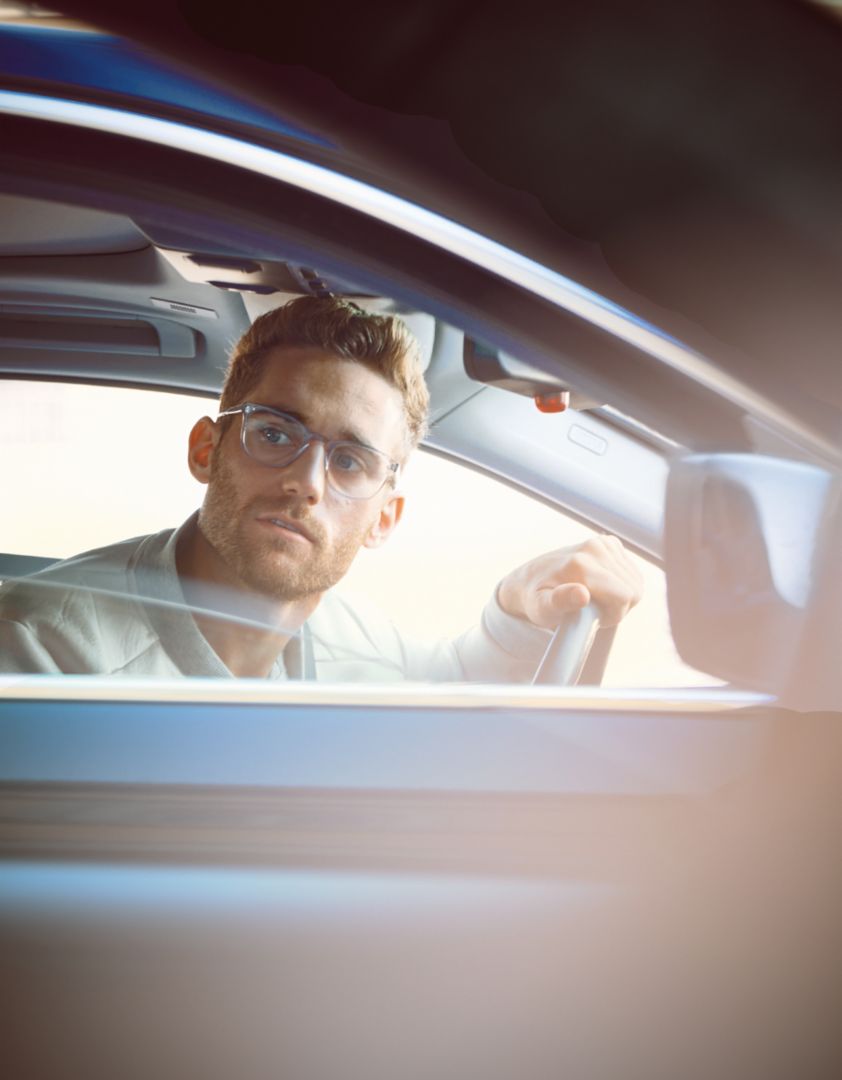
The words “recognizing a Porsche” lead inexorably to the Porsche brand. It has—within fractions of a second—a definitive influence on our perception process. What do I associate with the brand? What image does it have? Is it positive or negative? And then the cultural and societal knowledge that we save in our social brain feeds into the process. All of a sudden we don’t see just a car, we see an object of desire. A form that stands for wealth, for success, and above all, for freedom. The drive to overcome boundaries has been an intrinsic part of the human spirit for millennia. It seems to be useful, and that’s why it has been retained.
What that means in practice is this: the glimpse of something like a new Porsche allows a momentary flight from reality into another life, a daydream. This has nothing to do with whether the person can afford it, mind you.
A brand like Porsche recruits fans from all walks of life, around the world. Our brains spontaneously recognize a new model as relevant, which is a positive event. Emotionally, there are certainly many more Porsche drivers worldwide than the number of buyers in the customer files of the dealerships.

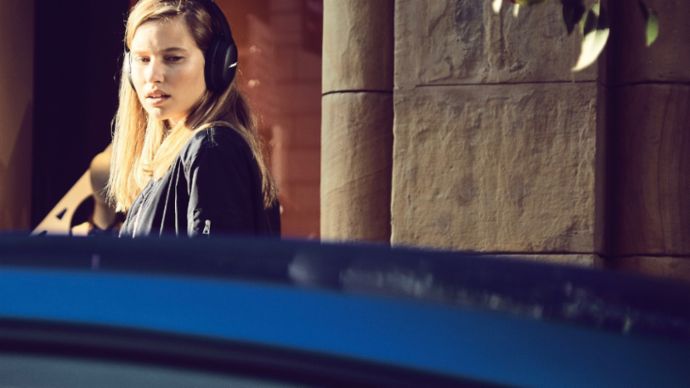
What if …
… I were to start a new, free life in this car? The sight of a Porsche allows us to daydream, a momentary escape from everyday reality.The drive to overcome boundaries has been an intrinsic part of the human spirit for millennia. It seems to be useful, and that’s why it has been retained.
The car from Zuffenhausen engenders an all but unequaled degree of acceptance across all strata of society.
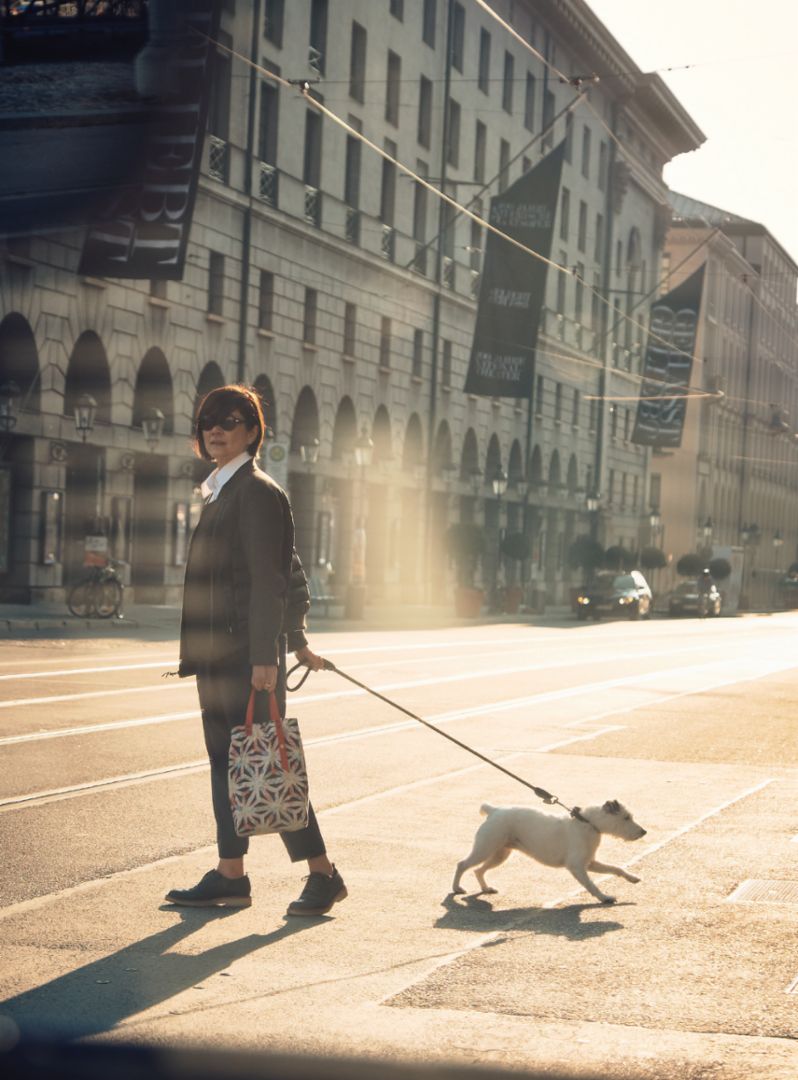
Who’s that in the car?
If we find similarities between the Porsche owner and ourselves, our brain sets off a fireworks display of reward neurotransmitters.Our social brains never sleep. That part of ourselves that’s constantly comparing our own status with that of others has a strong influence on our perception of a new car. A key aspect is the owner of the object of desire.
If we find a similarity between ourselves and the owner of the 911—in terms of age, appearance, attire, watch, dialect, dog, or sticker of a favorite soccer team—the conclusion is instantaneous: that could be us. And our brains suddenly set off a fireworks display of reward neurotransmitters that feels amazing. So we’re happy to take an extended look.
The extraordinary thing about the 911 is the fact that this sports car, which only a small percentage of drivers in the world possess, is regarded as part of one’s own picture of society. One’s proud of it, despite not owning one personally. It’s a famous friend from back in the day. From Top Trumps.
Leonhard Schilbach
Which Neural Mechanisms Are Taking Place During Social Interaction of Individuals?
